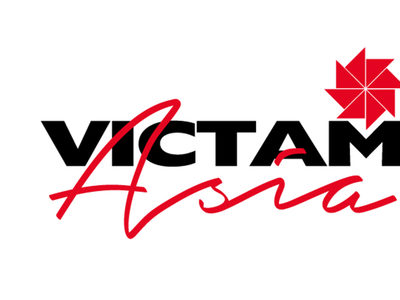Uzbekistan has pushed hard to increase grain production, moving land and resources into the sector, but the country remains one of the world’s biggest flour importers.
In its Grain Market Report, the International Grains Council (IGC) puts total grains production in Uzbekistan at 7.1 million tonnes in 2015-16, compared with 7.6 million in 2014-15. Total grains imports are put at 2.2 million tonnes, compared with 2.1 million in 2015-16, the figure being made up entirely of wheat.
In an update issued last August and referring to 2014-15, the USDA attaché said that the government of Uzbekistan reported about 8.05 million tonnes of total grain production, “out of which 93% to 94% is considered to be wheat.”
Based on irrigation water-deficit problems in the south, preliminarily forecasts for MY2014-15 wheat production is at 7.15 million tonnes, the report said.
“Various independent experts estimate that only about 50% to 55% of locally produced wheat is suitable for food use,” it said. “The remainder is used for feed and other purposes. Many private bakers still prefer using imported Kazakh wheat flour.”
Uzbekistan is one of the world’s biggest flour importers. According to the IGC, its imports will total an unchanged 1.3 million tonnes in 2015-16.
The state joint stock company Uzdonmahsulot dominates milling, with 48 mills and groat shops. According to its website, over 90% of the mills have convenient technological scheme and are capable of manufacturing all sorts of flour.
The attaché’s update put food wheat consumption at 6.6 million tonnes in 2014-15. “There are no official data on feed grain consumption in Uzbekistan, and we roughly estimate it between 1.9 to 2 million tonnes,” the report said. “Because of inflation and rising world prices, local wheat flour prices increased 8% to 9% over the last year. Around 70% to 75% of this volume is imported from Kazakhstan,” it said. “Therefore, Kazakhstan firmly remains the main supplier of high quality wheat and wheat flour to Uzbekistan.”
The attaché explained that over the past few years, Uzbekistan has put much effort into developing and increasing wheat flour production for the domestic market, mainly using imported Kazakh wheat. The country is a wheat exporter, with the attaché putting its exports at 500,000 tonnes of lower grade wheat.
“The export destinations are reportedly Iran, Afghanistan and a few Commonwealth of Independent States countries,” it said.
A 2015 report by the World Bank explains that the country’s agricultural systems have gone through significant structural changes that resulted in a reduction in total agricultural output value from 25% (2005) to 17% (2014) of the annual GDP.
“At the same time, with the implementation of land distribution and privatization initiatives, the number of households in agriculture increased and crop diversification was introduced,” it said. “Structural changes to the land tenure system following the restructuring of large collective and state farms have resulted in the formation of private farms and the expansion of small household plots. They are now responsible for much of the growth in agricultural output, with strong productivity gains leading to increased household incomes.”
It also points out that due to the arid conditions, more than 85% of Uzbekistan’s cropland is irrigated, an area that comprises approximately 10% of the total land area of the country.
In its Regional Overview of Food Insecurity Europe and Central Asia 2015, the United Nations Food and Agriculture Organization explained that Uzbekistan delivers state-supplied inputs at discounted prices to farms fulfilling state orders, as does Turkmenistan and, to some extent, Belarus.
“With the aim of establishing wheat self-sufficiency, Uzbekistan increased its area dedicated to wheat by 196% between 1991 and 2006,” it said.
“More importantly, the country changed from dry land wheat cultivation practices to production on irrigated land. This policy enabled higher yields (wheat yields on irrigated land are nearly always higher than on dry land) and thus higher levels of production of wheat and flour. However, it has also led to a diversion of irrigation water away from high-value fruits and vegetables to wheat, a relatively low-value crop.”
At a 2014 conference which he chaired, Uzbekistan’s President Islam Karimov described the country’s progress. “In Soviet times, agriculture in Uzbekistan was targeted exclusively on cotton production so the soil was getting poorer decade by decade, poisoned with chemicals and crop rotation did not exist,” he said. “So the first and foremost task after achieving independence was diversification of agricultural crops, revitalization of soil and modernization of the agricultural sector – providing jobs for more than 50% of population.”
“The main reason for significant improvement of the agriculture sector of Uzbekistan is the increased production and productivity since 2000, and FAO is proud to have been part of these efforts,” said FAO Director General José Graziano da Silva.
A July 2014 article by Uzbekistan Today, announcing the completion of the grain harvest, hailed the country’s success. “Local farmers have yielded more than 8 million tonnes of grain. The yield of the leading farms has exceeded 90 metric quintals per hectare. The president of Uzbekistan, Islam Karimov, has congratulated grain cultivators with the success.
“Some 23 years ago, Uzbekistan had to allocate huge funds for the import of 5 million tonnes of grain to meet the needs of more than 21 million of its population. Today, the country’s agricultural sector fully provides over 31 million of its population with bread baked from the locally grown wheat and even exports some of the grain crops. Over the years of independence, the total amount of grain harvesting in Uzbekistan has increased from 940,000 tonnes to 8 million tonnes. The average yield increased from 17 to 55 quintals per hectare, which clearly demonstrates making impressive, unfeasible earlier, progress.
“The ongoing radical reforms and changes in agriculture, primarily the establishment and promotion of farming businesses, its transformation into a decisive force in the rural areas, supporting the society, as well as developing the sense of a true land owner in farmers, and enhancement of their interest in the results of their work are the key factors in achieving high goals,” it quoted the president as saying. “I would like to emphasize that today’s progress has been ensured by the recent effective and comprehensive measures aimed at land reclamation, streamlined seed breeding, zoning of crop varieties as to soil and climatic conditions and water availability in the regions, prompt provision of modern agricultural machinery, including new harvesters, and fertilizers, fuels and lubricants, as well as supporting farmers with financial resources, primarily soft loans, and strengthening pest control.”
The paper quoted the Ministry of Agriculture and Water Resources as saying that during the growing season, the grain crops were nourished by 12.7 million tonnes of organic fertilizers or over 11 tonnes per hectare on average.
No biotech regulations
In a report for exporters, the attaché explains that Uzbekistan currently does not have any specific biotechnology regulations with regard to the labeling of biotech food products.
“It makes no distinction between conventional and biotech foods,” it said. “All are subject to the same food safety regulation.
“Uzbek consumers generally do not pay much attention to whether their food contains GE or not. However, Uzbekistan’s related authorities have been working on a draft biotech law over the past several years.
The attaché does not expect that this law will be adopted within the next few years.
Chris Lyddon is World Grain’s European editor. He may be contacted at: [email protected].
We want to hear from you — Send comments and inquiries to [email protected]. For reprints of WG articles, e-mail [email protected].
Key Facts
Capital: Tashkent (Toshkent)
Population: 28,929,716 (July 2014 est.)
Religions: Muslim 88% (mostly Sunni), Eastern Orthodox 9%, other 3%.
Location: Central Asia, north of Turkmenistan, south of Kazakhstan.
Government: Authoritarian presidential rule with little power outside the executive branch. Chief of state: President Islom Karimov (since March 24, 1990); head of government: Prime Minister Shavkat Mirziyoyev (since Dec. 11, 2003).
Economy: Uzbekistan is a dry, landlocked country; more than 60% of the population lives in densely populated rural communities. Export of natural gas, gold and cotton provides a significant share of foreign exchange earnings. Despite ongoing efforts to diversify crops, Uzbekistani agriculture remains largely centered on cotton; Uzbekistan is now the world's fifth largest cotton exporter and sixth largest producer. Following independence in September 1991, the government sought to prop up its Soviet-style command economy with subsidies and tight controls on production and prices. A sharp increase in the inequality of income distribution has hurt the lower ranks of society since independence. While aware of the need to improve the investment climate, the government continues to intervene in the business sector and has not addressed the impediments to foreign investment in the country. In 2003, the government accepted Article VIII obligations under the IMF, providing for full currency convertibility. However, strict currency controls and tightening of borders have lessened the effects of convertibility and have also led to some shortages that have further stifled economic activity. The Central Bank often delays or restricts convertibility, especially for consumer goods. Uzbekistan's growth has been driven primarily by state-led investments and a favorable export environment. In the past, Uzbekistani authorities have accused U.S. and other foreign companies operating in Uzbekistan of violating Uzbekistani laws and have frozen and even seized their assets. At the same time, the Uzbekistani government has actively courted several major U.S. and international corporations, offering financing and tax advantages.
GDP per capita: $5,600 (2014 est.); inflation: 12.1% (2014 est.); unemployment: 74.9% (2014 est.).
Currency: Uzbekistani soum (UZS): 2,550.83 soums equal 1 U.S. dollar (June 22, 2015).
Exports: $13.32 billion (2014 est.): energy products, cotton, gold, mineral fertilizers, ferrous and nonferrous metals, textiles, foodstuffs, machinery, automobiles.
Imports: $12.5 billion (2014 est.): machinery and equipment, foodstuffs, ferrous and nonferrous metal.
Major crops/agricultural products: Cotton, vegetables, fruits, grain; livestock.
Agriculture: 18.5% of GDP and 25.9% of the labor force.
Internet: Code: .uz; 56,075 (2012) hosts and 4.689 million (2009) users.
Source: CIA Factbook





